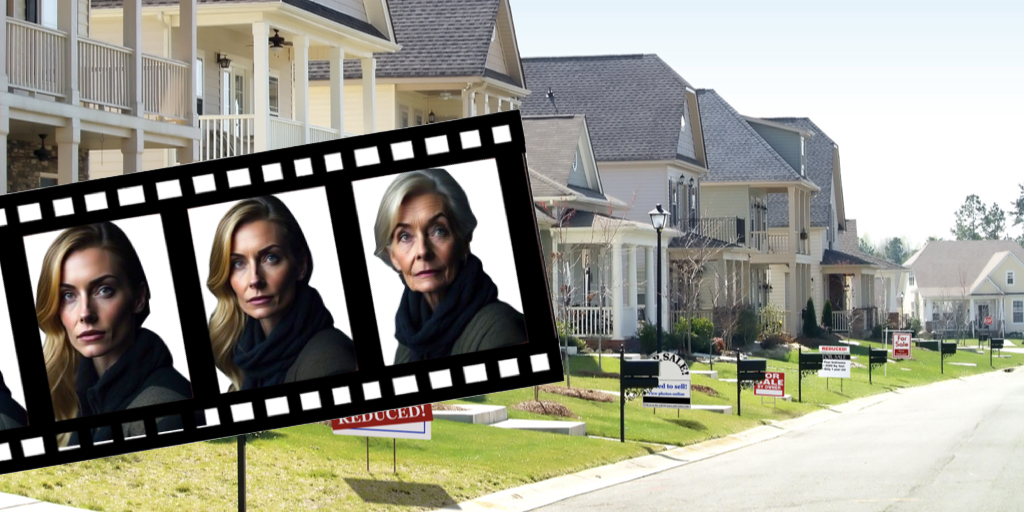 In recent years, being able to remain in one’s own home well into retirement was seen as the key to vital aging, and “aging in place” became the catchphrase for a myriad of support structures to make it possible.
In recent years, being able to remain in one’s own home well into retirement was seen as the key to vital aging, and “aging in place” became the catchphrase for a myriad of support structures to make it possible.
However, aging in place is not necessarily synonymous with having a network of friends, family and community members available to enrich our later years. Aging in community, it turns out, may trump aging in place as far as ideal models go.
But we’re not talking assisted living — or even typical retirement communities.
Janice Blanchard, co-founder of Aging Better Together and Mosaic Communities, two entrepreneurial companies that build community-based solutions and innovative housing designed to optimize the ability of older adults to stay physically active, socially connected and meaningfully engaged with people of all ages in their communities, says, “Boomers are the first generation en masse to have provided care for their parents — and they know they don’t want to age in the same way.”
This hands-on experience has been the impetus for the growth of new models that are springing up organically across the country. “It’s a grassroots movement of like-minded people who’ve come together to create systems of mutual support and caring to enhance their well-being, and to maximize together the ability as they age to remain not only in their homes, but active in their communities,” explains Blanchard.
Models for Aging in Community include:
- The Village Network: a central hub that helps communities establish and maintain Villages, which are membership-driven, grass-roots organizations that coordinate access to affordable services including transportation, health and wellness programs, home repairs, social and educational activities, and other day-to-day needs to enable older adults to remain at home yet not alone.
- Community Without Walls: a Princeton, NJ-based, social support, education and advocacy network that functions somewhat like a Village. Women for Living in Community is a similar type of resource geared specifically towards older women.
- Co-housing, discussed in this HECMWorld article, is a living structure that affords privacy within community.
- Pocket neighborhoods: Clusters of homes around a common outdoor space. Sometimes described as “cohousing lite”.
- Shared housing: Programs in which a person 60+ is paired with a younger housemate who provides companionship that may involve basic assistance, such as driving, cooking, or light housekeeping, in exchange for reduced (or in lieu of) rent. One example is Share Sonoma County.
Why is aging in community mushrooming in popularity now? Blanchard begins with her own story: at age 30, she was called home to care for her dad and grandmother, each diagnosed as close to death. Thanks to her availability, they were both able to return home to die rather than living out their final weeks in a nursing facility. Her sister was also residing at the family homestead, with a new baby.
The upshot? Neither of Blanchard’s relatives fulfilled their doctors’ dire predictions. Her grandma lived another decade, dying at age 98; her dad is still alive thirty years later. Blanchard believes their life expectancies far exceeded their terminal diagnoses because they were ensconced in family, surrounded by people pulsing with life.
Feeling needed, and valued, is essential to survival. Blanchard cites five additional factors:
- Boomers are the first generation to have the experience of living in community with peers, in college and into their twenties. The idea of living with unrelated people is not an alien concept; in fact, it has great appeal. “Boomers bring ‘Woodstock Nation’ values: a sense of ‘we’re all in this together; we need one another’. This is very different from prior generations, who had a John Wayne mentality: I can do it all alone.”
- 78 million Boomers are aging as one. Current options simply aren’t sufficient.
- Boomers seek an integration of mind/body/spirit beyond physical health.
- There is a sharing economy emerging — and this applies to aging as well. How can we share our talents, our cars, our lawnmowers? It doesn’t just help financially, it also brings us together socially and helps create community. Like AirBnB, which offers a cozy home in lieu of a sterile hotel room for travelers, we can do the same with aging in community: create an opportunity for connection and intimacy.
- Many people can’t afford to live solo later in life.
Age integration is also crucial. Elder Spirit Cohousing Community in Abington, Virginia, one of the nation’s first 55+ cohousing communities, makes a strong effort to integrate seniors who live there into the larger community. “We benefit as a species by living in multigenerational communities. We all lose something of our humanness by living age-segregated lives,” observes Blanchard. Her words ring true: my lifelong friend Ellie, who transitioned at 101, had friends throughout the age spectrum. To me, she felt like a wise older sister; our friendship transcended chronology.
You might want to inform and invite younger reverse mortgage clients to explore the community model, which can help put the “fun” in having the funds to retire well.








4 Comments
Amara,
This is helpful to know but as far as acting on it immediately in our business life, it seems this would be far more useful to real estate salespeople. Our purpose is to help implement what seniors want to do, not create interest in other kinds of living arrangements.
I literally had no idea that senior housing was developing into such identifiable groupings. The article was extremely insightful.
Cynic,
I think you may have read through the piece a bit hastily. The various models described are ways to help seniors age in place successfully with support, and all of them are HECM-possible assuming the senior in question owns their own unit. A model such as cohousing might be extremely relevant to immediate LO action if, for example, someone wants to downsize and use a HECM for Purchase.
Thanks for reading and commenting.
Amara,
This latest blog makes you consider a lot of the ramifications of what really helps most people age in place. I have some older friends with good financial means who thought they wanted to move to a place called Westminster Oaks, which is a big Presbyterian Senior village in Tallahassee, Florida. Very expensive to go there and with a waiting list. The more they have thought about it, the more they are focused on not spending their adult kids’ inheritance on themselves. Friends, family, social network and medical relationships along with religious ties are so important
towards keeping the elderly active and involved in various activities.
Florida has a very large community called “The Villages” just south of Ocala and is now the largest growing “city” in Florida. There are so many activities
available for all the residents, you can dance any night of the week, find sewing clubs, bridge, golf, tennis, etc. Another neat place in Florida is “Penney Farms” outside of Jacksonville. It is a retirement community for ministers and their spouses.
I firmly believe that remaining very active and having to schedule your daily activities prolongs a person’s good health and life span. I am finding that many older people don’t have a lot of interest in watching TV, either. They seem to have only a few programs they like to watch and are too busy with more productive interests.
I will look forward to your future articles and always learn from them and enjoy the read.
Dick,
You have your finger on the pulse of your market, and your intimate connection with those you serve makes you a vital, valued resource on so many levels.
Florida’s senior community is fortunate to have you among them!